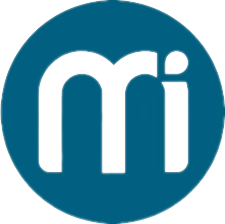AI in Pathology Market: Size, Share, Trends, Growth, and Forecast 2025-2034

Overview of the AI in Pathology Market
The AI in pathology market is transforming the way healthcare professionals analyze and interpret medical data. Pathology plays a critical role in diagnosing diseases, guiding treatments, and advancing medical research. With the exponential growth of pathology data and the increasing demand for accurate and early diagnoses, artificial intelligence (AI) has become an essential tool in modern pathology.
The AI in pathology market was valued at USD 26.35 million in 2024, supported by rising digitization of pathology workflows, the need for cost-effective diagnostic solutions, and advancements in machine learning algorithms. The market is projected to grow at a CAGR of 9.12% between 2025 and 2034, reaching a value of USD 63.07 million by 2034.
AI technologies such as deep learning, computer vision, and natural language processing are enabling pathologists to analyze medical images, identify disease biomarkers, and automate repetitive diagnostic tasks. This not only enhances accuracy but also reduces diagnostic turnaround times. As healthcare systems worldwide strive for efficiency and precision, AI in pathology is becoming a key enabler of innovation in clinical practice.
Size and Share of the AI in Pathology Market
The AI in pathology market size reached USD 26.35 million in 2024 and is expected to more than double to USD 63.07 million by 2034. The steady growth reflects increasing adoption of AI-powered pathology tools in hospitals, research centers, and diagnostic laboratories.
Market Share Insights:
-
North America dominates the market, accounting for the largest share due to its advanced healthcare infrastructure, strong research ecosystem, and presence of key companies like Paige AI, Inc., Ibex Medical Analytics, and Philips.
-
Europe follows closely, with significant investments in digital pathology and AI integration, particularly in Germany, the UK, and France.
-
Asia-Pacific is expected to witness the fastest growth, driven by rising demand for advanced diagnostics, growing healthcare expenditure, and government support for AI in healthcare.
The shift towards digital pathology platforms and integration of AI in cancer diagnostics are among the leading factors shaping market share. The oncology segment, in particular, accounts for a significant portion of AI adoption due to the rising global cancer burden.
Market Dynamics and Trends
The AI in pathology market is being shaped by a combination of growth drivers, restraints, and evolving trends.
Drivers
-
Growing Pathology Data Volumes: Digitization of pathology slides and imaging has led to an unprecedented increase in data, requiring AI for efficient analysis.
-
Rising Cancer Prevalence: The global cancer epidemic is fueling demand for AI-based pathology solutions for faster and more accurate detection.
-
Shortage of Skilled Pathologists: AI is helping address workforce shortages by automating routine tasks and supporting clinical decisions.
-
Advances in AI Algorithms: Improved accuracy in image recognition and deep learning models enhances diagnostic precision.
Trends
-
Integration of Digital Pathology with AI: Hospitals and labs are increasingly moving from manual processes to digital workflows combined with AI-based image analysis.
-
Cloud-Based Pathology Platforms: AI-driven pathology solutions are increasingly offered through the cloud, enabling remote diagnostics and scalability.
-
Companion Diagnostics in Oncology: AI-powered pathology is becoming integral in identifying biomarkers for personalized cancer therapies.
-
Collaborations and Partnerships: Tech companies and healthcare providers are joining forces to expand AI applications in pathology.
Restraints
-
Data Privacy and Security: Handling sensitive medical data remains a significant challenge.
-
High Implementation Costs: Transitioning to AI-powered pathology systems requires substantial upfront investments.
-
Regulatory Hurdles: Different countries have varying approval processes for AI in healthcare, slowing adoption.
Read full report: https://www.expertmarketresearch.com/reports/ai-in-pathology-market/requestsample
Growth Prospects of the AI in Pathology Market
The AI in pathology market is expected to sustain robust growth over the next decade, with its value projected to increase from USD 26.35 million in 2024 to USD 63.07 million in 2034. Several factors underpin this expansion:
-
Precision Medicine Demand: AI in pathology is central to precision medicine, offering insights into patient-specific treatments.
-
Expansion in Emerging Markets: Developing regions are rapidly adopting AI technologies due to government-backed digital health initiatives.
-
AI in Cancer Diagnostics: Oncology remains the largest application area, with AI improving tumor identification and staging.
-
Efficiency in Clinical Trials: AI-powered pathology platforms are being used to analyze patient samples more efficiently in pharmaceutical research.
This strong growth trajectory suggests that AI will play an increasingly critical role in shaping the future of pathology and diagnostics.
Market Opportunities and Challenges
Opportunities
-
Personalized Medicine Advancements: AI can integrate pathology with genomic data to create tailored treatment plans.
-
Telepathology Adoption: AI-powered remote diagnostics present new opportunities, especially in underserved areas.
-
Integration with Robotics and Automation: Automating lab workflows with AI-driven robotics could boost efficiency.
-
Expanding Role in Non-Cancer Diagnostics: Beyond oncology, AI in pathology can be applied in cardiovascular, neurological, and infectious disease diagnosis.
Challenges
-
Data Annotation Requirements: Training AI models requires large, annotated datasets, which can be time-intensive to generate.
-
Resistance from Healthcare Professionals: Concerns about AI replacing pathologists may hinder adoption.
-
Interoperability Issues: Integrating AI tools with existing healthcare IT systems remains a barrier.
-
Regulatory Approvals: Stringent regulations and slow approval timelines delay commercial rollouts.
Recent Developments in AI in Pathology
The market has seen rapid innovation, with several key developments shaping its growth:
-
Philips Pathology AI Expansion: Philips has advanced its AI-powered pathology imaging platforms for cancer diagnostics.
-
Roche’s Digital Pathology Investments: Roche is expanding its portfolio through AI integration in digital pathology workflows.
-
Ibex Medical Analytics FDA Clearance: Ibex achieved regulatory approvals for AI-powered breast cancer diagnostic tools.
-
Paige AI Innovations: Paige has introduced AI tools that assist pathologists in detecting prostate, breast, and colorectal cancers.
-
Aiforia Technologies Clinical Deployments: Aiforia has expanded its AI-powered image analysis solutions across European hospitals.
-
Proscia’s Concentriq Platform: Proscia continues to strengthen its AI pathology platform, helping institutions scale digital pathology.
These advancements highlight how AI adoption is accelerating across hospitals, labs, and research centers.
Competitor Analysis and Key Players
The AI in pathology market is moderately competitive, with several established players and emerging startups driving innovation. Below are key players and their contributions:
Koninklijke Philips N.V.
Philips is a global leader in healthcare technology and has pioneered AI-powered digital pathology solutions. Its platforms are widely used for cancer diagnostics and clinical decision support.
F. Hoffmann-La Roche Ltd
Roche, through its diagnostics division, is investing heavily in digital pathology solutions integrated with AI, enhancing its oncology portfolio.
Hologic, Inc.
Hologic leverages AI in pathology primarily for women’s health diagnostics, focusing on breast and cervical cancer.
Indica Labs, Inc.
Indica Labs develops HALO AI, a leading digital pathology image analysis platform that integrates AI for cancer and biomarker research.
Ibex Medical Analytics Ltd.
Ibex is a trailblazer in AI pathology, offering FDA-approved solutions for cancer detection in pathology slides, with applications in breast and prostate cancers.
Aiforia Technologies
Aiforia provides cloud-based AI solutions for pathology image analysis, supporting both research and clinical applications.
Paige AI, Inc.
Paige is recognized for its AI pathology software that assists in diagnosing prostate, breast, and colorectal cancers, with strong regulatory clearances.
DeePathology Ltd.
DeePathology specializes in deep learning-based solutions for slide annotation and image analysis in digital pathology.
Qritive
Qritive focuses on AI-powered digital pathology solutions that enable faster, more accurate cancer diagnostics across global healthcare facilities.
Proscia Inc.
Proscia is advancing AI pathology platforms with its Concentriq software, enabling hospitals and research institutions to adopt large-scale digital pathology workflows.
These players are continuously innovating through R&D, mergers, acquisitions, and strategic partnerships, ensuring the market remains dynamic and competitive.
Frequently Asked Questions (FAQ)
What was the value of the AI in pathology market in 2024?
The market was valued at USD 26.35 million in 2024.
What is the projected market size of AI in pathology by 2034?
The market is forecasted to reach USD 63.07 million by 2034, growing at a CAGR of 9.12%.
What are the key drivers of the AI in pathology market?
Major drivers include growing pathology data, cancer prevalence, shortage of pathologists, and advancements in AI algorithms.
Which region dominates the AI in pathology market?
North America currently leads, followed by Europe, while Asia-Pacific is expected to grow the fastest.
Who are the leading companies in the AI in pathology market?
Key players include Philips, Roche, Hologic, Indica Labs, Ibex Medical Analytics, Aiforia, Paige AI, DeePathology, Qritive, and Proscia.
What challenges does the market face?
Challenges include data privacy issues, regulatory hurdles, high implementation costs, and workforce resistance.
Find More Report:
CDMO Market: https://bit.ly/45yUr3r
Epigenomics Market: https://bit.ly/45fzoCX
Cryotherapy Market: https://bit.ly/4lFHr1C
- Art
- Causes
- Crafts
- Dance
- Drinks
- Film
- Fitness
- Food
- Games
- Gardening
- Health
- Home
- Literature
- Music
- Networking
- Other
- Party
- Religion
- Shopping
- Sports
- Theater
- Wellness


